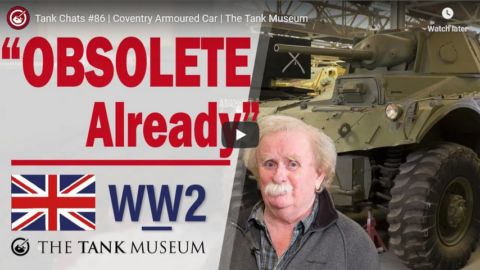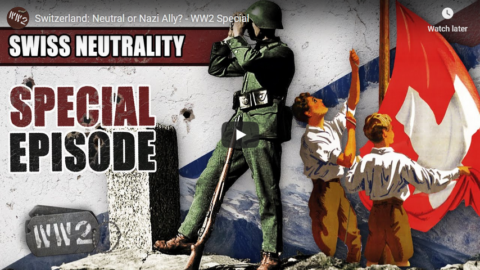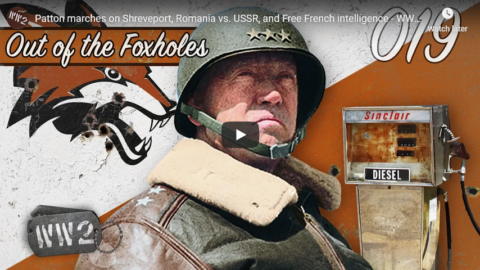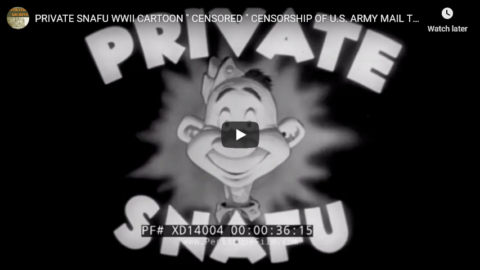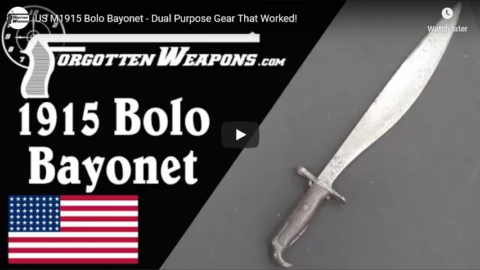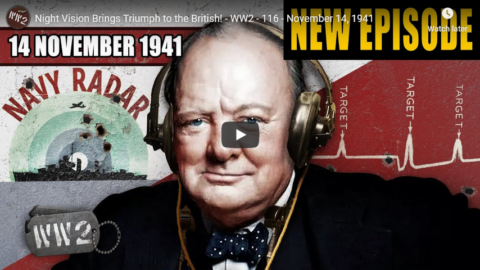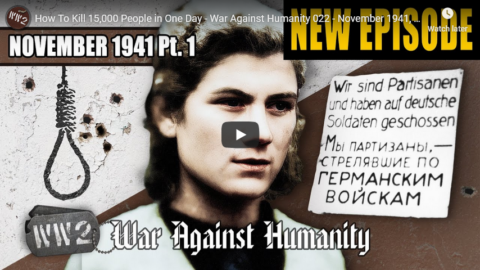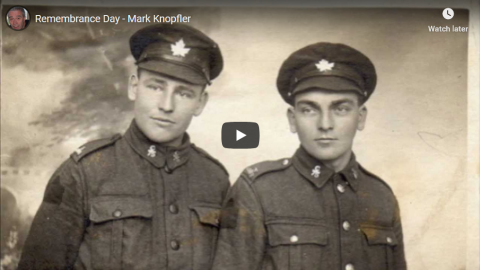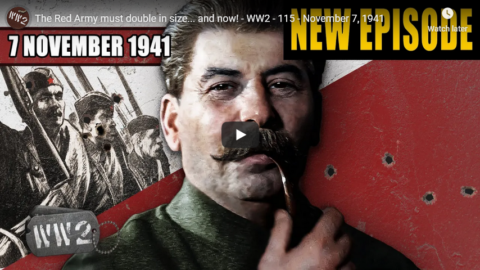The Tank Museum
Published 18 Oct 2019David Fletcher looks at the British WW2 Coventry Armoured Car. It never saw service and was already considered obsolete by the time it was built.
Support the work of The Tank Museum on Patreon: ► https://www.patreon.com/tankmuseum
Visit The Tank Museum SHOP: ► https://tankmuseumshop.org/
Twitter: ► https://twitter.com/TankMuseum
Instagram: ► https://www.instagram.com/tankmuseum/
Tiger Tank Blog: ► http://blog.tiger-tank.com/
Tank 100 First World War Centenary Blog: ► http://tank100.com/
#tankmuseum #tanks
November 26, 2020
Tank Chats #86 | Coventry Armoured Car | The Tank Museum
November 25, 2020
Switzerland: Neutral or Nazi Ally? – WW2 Special
World War Two
Published 24 Nov 2020After the fall of France in June 1940, neutral Switzerland found itself surrounded on all sides by a hostile expansionist power. The small nation would have been a valuable possession but the jaws of the Reich hesitated to swallow it. How did Switzerland manage to exit the conflict intact and largely unscathed?
Join us on Patreon: https://www.patreon.com/TimeGhostHistory
Or join The TimeGhost Army directly at: https://timeghost.tvFollow WW2 day by day on Instagram @ww2_day_by_day – https://www.instagram.com/ww2_day_by_day
Between 2 Wars: https://www.youtube.com/playlist?list…
Source list: http://bit.ly/WW2sourcesHosted by: Spartacus Olsson
Written by: Lennart Visser & Francis van Berkel,
Director: Astrid Deinhard
Producers: Astrid Deinhard and Spartacus Olsson
Executive Producers: Astrid Deinhard, Indy Neidell, Spartacus Olsson, Bodo Rittenauer
Creative Producer: Maria Kyhle
Post-Production Director: Wieke Kapteijns
Research by: Lennart Visser
Edited by: Karolina Dołęga
Sound design: Marek Kamiński
Map animations: Eastory (https://www.youtube.com/c/eastory)Colorizations by:
Adrien Fillon – https://www.instagram.com/adrien.colo…
Cassowary ColorizationsSources:
– Pictures of Swiss Army by Strübin Theodor courtesy of Archäologie und Museum Baselland Lizenzbedingungen
– Bundesarchiv
– Imperial War Museums: HU56131
– ETH-Bibliothek Zürich: 03258, LBS MH05-02-04, M01-0756-0001
– Fortepan:3889, 92301
– National Archives
– Staatsarchiv Bern – P362
– Plan of the defence lines of the National Redoubt courtesy of Auge=mit from Wikimedia Commons
– Picture of Swiss Soldiers with anti-aircraft gun courtesy of Paebi from Wikimedia Commons
– Picture of Swiss aircraft in 1943 from theM.Pilloud – Archive familiale
– United States Holocaust Memorial MuseumSoundtracks from Epidemic Sound:
– “Other Sides of Glory” – Fabien Tell
– “Moving to Disturbia” – Experia
– “Remembrance” – Fabien TellArchive by Screenocean/Reuters https://www.screenocean.com.
A TimeGhost chronological documentary produced by OnLion Entertainment GmbH.
From the comments:
World War Two
1 hour ago
As we draw close to the end of 1941, it becomes clear that neutrality is not a guarantee of safety. Its utility as a diplomatic strategy has been discarded and is non-existent.A total of 12 sovereign and neutral nations have been invaded by Allied or Axis powers since the beginning of the war — Denmark and Norway on 9 April 1940; Belgium, the Netherlands, Iceland and Luxembourg on 10 May 1940; Lithuania on 15 June 1940 and Latvia and Estonia on 17 June; Greece on 28 October 1940 and Yugoslavia in April 1941; Iran in August 1941. Even those that are spared are compelled to assist either the Allies or the Axis or both in financial and economic terms, such as Switzerland and Sweden. Others offer voluntary military assistance such as Portugal and Spain.
November 22, 2020
QotD: Winston Churchill
I wonder whether any historian of the future will ever be able to paint Winston in his true colours. It is a wonderful character — the most marvellous qualities and superhuman genius mixed with an astonishing lack of vision at times, and an impetuosity which if not guided must inevitably bring him into trouble again and again. Perhaps the most remarkable failing of his is that he can never see a whole strategical problem at once. His gaze always settles on some definite part of the canvas and the rest of the picture is lost. It is difficult to make him realize the influence of one theatre on another. The general handling of the German reserves in Europe can never be fully grasped by him. This failing is accentuated by the fact that often he does not want to see the whole picture, especially if this wider vision should in any way interfere with the operation he may have temporarily set his heart on. He is quite the most difficult man to work with that I have ever struck, but I should not have missed the chance of working with him for anything on earth!
Footnote by Field Marshal Lord Alanbrooke, War Diaries, 1939-1945, 1957.
November 20, 2020
November 19, 2020
Deception and Dust-ups – Desert Warfare Tactics – WW2 Special
World War Two
Published 18 Nov 2020When Allies and Axis clash on the deserts of North Africa, harsh and unique conditions force them to develop new tactics. From misdirection to new ways to move across the desert, all to gain an advantage over the enemy.
Join us on Patreon: https://www.patreon.com/TimeGhostHistory
Or join The TimeGhost Army directly at: https://timeghost.tvFollow WW2 day by day on Instagram @ww2_day_by_day – https://www.instagram.com/ww2_day_by_day
Between 2 Wars: https://www.youtube.com/playlist?list…
Source list: http://bit.ly/WW2sourcesHosted by: Indy Neidell
Written by: Marlon William Londoño and Francis van Berkel
Director: Astrid Deinhard
Producers: Astrid Deinhard and Spartacus Olsson
Executive Producers: Astrid Deinhard, Indy Neidell, Spartacus Olsson, Bodo Rittenauer
Creative Producer: Maria Kyhle
Post-Production Director: Wieke Kapteijns
Research by: Marlon William Londoño
Edited by: Miki Cackowski
Sound design: Marek Kamiński
Map animations: Eastory (https://www.youtube.com/c/eastory)Colorizations by:
Julius Jääskeläinen – https://www.facebook.com/JJcolorization/
Spartacus OlssonSources:
IWM E 18461, E 8361, E 10147, E 12630, E 12385, E 12375, E 21337, E 12410, HU 3715, E 21339, E 4350
Picture of John Hutton, courtesy of Coventry Society
Picture of Edwin Galligan, Steven Sykes and Fred Pusey, courtesy of Rick Stroud
Picture of Hugh Cott, courtesy of Selwyn College, Cambridge
Picture og Ralph Alger Bagnold, courtesy of National Portrait Gallery
from the Noun Project: sun by MRFASoundtracks from the Epidemic Sound:
Reynard Seidel – “Deflection”
Max Anson – “Ancient Saga”
Hakan Eriksson – “Epic Adventure Theme 4”
Rannar Sillard – “March Of The Brave 4”
Jon Bjork – “Force Matrix”Archive by Screenocean/Reuters https://www.screenocean.com.
A TimeGhost chronological documentary produced by OnLion Entertainment GmbH.
From the comments:
World War Two
6 hours ago
As we see the North African campaign ongoing in our week by week series, in today’s episode we take a closer look at the tactics and logistical developments that helped shaped that campaign.
Japanese Type 10 Light Grenade Projector (aka Knee Mortar)
Forgotten Weapons
Published 24 Mar 2018In the aftermath of World War One, the Japanese military saw the utility of infantry-portable light grenade launchers instead of rifle grenades, and adopted the Type 10 in 1921 (Taisho 10). It went into production in 1923 at the Tokyo Army Arsenal, although the great Tokyo earthquake led to production being moved to Nagoya, where about 11,000 were made between 1925 and 1937. The Type 10 was a remarkably light and handy weapon, weighing just 5.5lb (2.5kg) and disassembling into a transport configuration the size of a wine bottle.
The larger Type 89 grenade launcher was adopted in 1929, which led to the older Type 10s being relegated to use for illumination and signaling, which they did through the end of World War Two.
http://www.patreon.com/ForgottenWeapons
Cool Forgotten Weapons merch! http://shop.bbtv.com/collections/forg…
If you enjoy Forgotten Weapons, check out its sister channel, InRangeTV! http://www.youtube.com/InRangeTVShow
Contact:
Forgotten Weapons
6281 N Oracle #36270
Tucson, AZ 85704
I posted Ian’s review of the Type 89 here.
November 17, 2020
Private SNAFU “Censored” WW2 US Army cartoon
PeriscopeFilm
Published 11 Aug 2020Want to support this channel and help us preserve old films? Visit https://www.patreon.com/PeriscopeFilm
Visit our website www.PeriscopeFilm.com
Censored is one of 26 Private SNAFU (Situation Normal, All F*cked Up) cartoons made by the U.S. Army Signal Corps to educate and boost the morale of the troops. The SNAFU character was created by Theodore Geisel (Dr. Seuss) and Phil Eastman, and most were animated by Warner Brothers Animation Studios. They were voiced by actors including Mel Blanc and scored by Carl Stalling. This cartoon Censored, depicts the lengths to which Private SNAFU will go to sneak an uncensored letter in the mail — with terrifying results. Fortunately it all turns out to be a dream, but SNAFU is so shaken that he censors his own mail. The film was obviously inspired by the mass censorship of personal letters by the Army during the war, to reduce the chance that enemy spies would be able to gain intelligence by intercepting them.
Much of the military correspondence during the war took place via V-mail, short for Victory Mail. This was a hybrid mail process used as the primary and secure method to correspond with soldiers stationed abroad. To reduce the cost of transferring an original letter through the military postal system, a V-mail letter would be censored, copied to film, and printed back to paper upon arrival at its destination. The V-mail process is based on the earlier British Airgraph process
During World War II, both the Allies and Axis instituted postal censorship of civil and military mail. The largest organizations were those of the United States, though the United Kingdom employed about 10,000 censor staff while Ireland, a small neutral country, only employed about 160 censors. Both blacklists and whitelists were employed to observe suspicious mail or listed those whose mail was exempt from censorship. In the United States censorship was under the control of the Office of Censorship whose staff count rose to 14,462 by February 1943.
We encourage viewers to add comments and, especially, to provide additional information about our videos by adding a comment! See something interesting? Tell people what it is and what they can see by writing something for example: “01:00:12:00 — President Roosevelt is seen meeting with Winston Churchill at the Quebec Conference.”
This film is part of the Periscope Film LLC archive, one of the largest historic military, transportation, and aviation stock footage collections in the USA. Entirely film backed, this material is available for licensing in 24p HD, 2k and 4k. For more information visit http://www.PeriscopeFilm.com
November 16, 2020
US M1915 Bolo Bayonet – Dual Purpose Gear That Worked!
Forgotten Weapons
Published 27 Nov 2017The M1915 bolo bayonet was originally the brainchild of US Army Captain Hugh D. Wise, Quartermaster with the 9th Infantry in the Philippines. In 1902, he recommended the implement in a letter to his superior officers, noting that a bolo style of bayonet (ie, one with a widened machete-like blade) would have several advantages over the standard knife bayonet then being issued with the Krag-Jorgenson rifles the US Army was using. Specifically, the wider bayonet would be easier to recover after a thrust (he noted several instances of troopers being killed while trying to extricate their bayonets from enemies) and also (and more significantly) make an excellent and necessary bushwhacking tool in the jungle environment of the Philippines.
Wise’s idea was taken with interest and Springfield produced a series of experimental bolo bayonets, but the project ended there as the 1903 Springfield was adopted with a rod bayonet instead of a blade. Of course, the rod bayonet would be shortlived, and the blade bayonet would come back. The bolo bayonet ideas resurfaced in 1911 when a commission was formed to look into special equipment for the Philippine Scouts. After another series of experimental designs, the M1915 Bolo bayonet was formally adopted on May 22, 1915 and an order was placed for 6,000 of them to be made at Springfield Armory.
Delivery of these bayonets took place in 1915 and 1916, and they proved to be extremely popular tools with the soldiers in the Philippines. They would remain in service on the islands until World War Two, serving at last as a replacement for the M1913 cavalry saber for the 26th Cavalry.
http://www.patreon.com/ForgottenWeapons
Cool Forgotten Weapons merch! http://shop.bbtv.com/collections/forg…
If you enjoy Forgotten Weapons, check out its sister channel, InRangeTV! http://www.youtube.com/InRangeTVShow
November 15, 2020
November 13, 2020
QotD: Military allies
Partnership implies the burden is shared more or less equally. If I bought twenty quid’s worth of shares in The Spectator and started swanning about bitching that Conrad Black didn’t treat me as a partner, he’d rightly think I’d gone nuts. The British in their time were at least as ruthless about such realities as the Americans are today. For example, in September 1944, in one of the lesser-known conferences to prepare for the post-war world, Churchill and Roosevelt met in Quebec City. They had no compunction about excluding from their deliberations the Canadian Prime Minister, Mackenzie King, even though he was the nominal host. There’s a cartoon of the time showing King peering through a keyhole as the top dogs settled the fate of the world without him.
And guess what? Militarily speaking, Canada was a far bigger player back then than Britain is today: the Royal Canadian Navy was the world’s third-biggest surface fleet, the Canucks got the worst beach at Normandy — but hey, why bore you with details? In those days that still wasn’t enough to get you a seat at the table.
Mark Steyn, “The Brutal Cuban Winter”, The Spectator, 2002-01-26.
November 11, 2020
In memoriam
A simple recognition of some of our family members who served in the First and Second World Wars:
The Great War
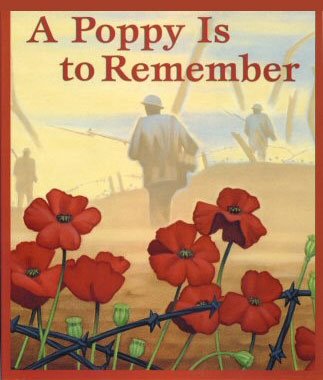 Private William Penman, Scots Guards, died 16 May, 1915 at Le Touret, age 25
Private William Penman, Scots Guards, died 16 May, 1915 at Le Touret, age 25
(Elizabeth’s great uncle)- Private Archibald Turner Mulholland, Argyll & Sutherland Highlanders, mortally wounded 25 September, 1915 at Loos, age 27
(Elizabeth’s great uncle) - Private David Buller, Highland Light Infantry, died 21 October, 1915 at Loos, age 35
(Elizabeth’s great grandfather) - Private Harold Edgar Brand, East Yorkshire Regiment. died 4 June, 1917 at Tournai.
(My first cousin, three times removed) - Private Walter Porteous, Durham Light Infantry, died 4 October, 1917 at Passchendaele, age 18
(my great uncle) - Corporal John Mulholland, Argyll & Sutherland Highlanders, wounded 2 September, 1914 (shortly before the First Battle of the Aisne), wounded again 29 June, 1918, lived through the war.
(Elizabeth’s great uncle)
The Second World War
- Flying Officer Richard Porteous, RAF, survived the defeat in Malaya and lived through the war
(my great uncle) - Able Seaman John Penman, RN, served in the Defensively Equipped Merchant fleet on the Murmansk Run (and other convoy routes), lived through the war
(Elizabeth’s father) - Private Archie Black (commissioned after the war and retired as a Major), Gordon Highlanders, captured at Singapore (aged 15) and survived a Japanese POW camp
(Elizabeth’s uncle) - Elizabeth Buller, “Lumberjill” in the Women’s Land Army in Scotland through the war.
(Elizabeth’s mother) - Trooper Leslie Taplan Russon, 3rd Royal Tank Regiment, died at Tobruk, 19 December, 1942 (aged 23).
Leslie was my father’s first cousin, once removed (and therefore my first cousin, twice removed).
For the curious, the Commonwealth War Graves Commission the Royal British Legion, and the Library and Archives Canada WW1 and WW2 records site provide search engines you can use to look up your family name. The RBL’s Every One Remembered site shows you everyone who died in the Great War in British or Empire service (Canadians, Australians, New Zealanders, South Africans and other Imperial countries). The CWGC site also includes those who died in the Second World War. Library and Archives Canada allows searches of the Canadian Expeditionary Force and the Royal Newfoundland Regiment for all who served during WW1, and including those who volunteered for the CEF but were not accepted.
In Flanders fields the poppies blow
Between the crosses row on row,
That mark our place; and in the sky
The larks, still bravely singing, fly
Scarce heard amid the guns below.We are the Dead. Short days ago
We lived, felt dawn, saw sunset glow,
Loved and were loved, and now we lie
In Flanders fields.Take up our quarrel with the foe:
To you from failing hands we throw
The torch; be yours to hold it high.
If ye break faith with us who die
We shall not sleep, though poppies grow
In Flanders fields.Lieutenant Colonel John McCrae, MD Canadian Army Medical Corps (1872-1918)
Mark Knopfler – “Remembrance Day”
Bob Oldfield
Published on 3 Nov 2011A Remembrance Day slideshow using Mark Knopfler’s wonderful “Remembrance Day” song from the album Get Lucky (2009). The early part of the song conveys many British images, but I have added some very Canadian images also which fit with many of the lyrics. The theme and message is universal… “we will remember them”.

